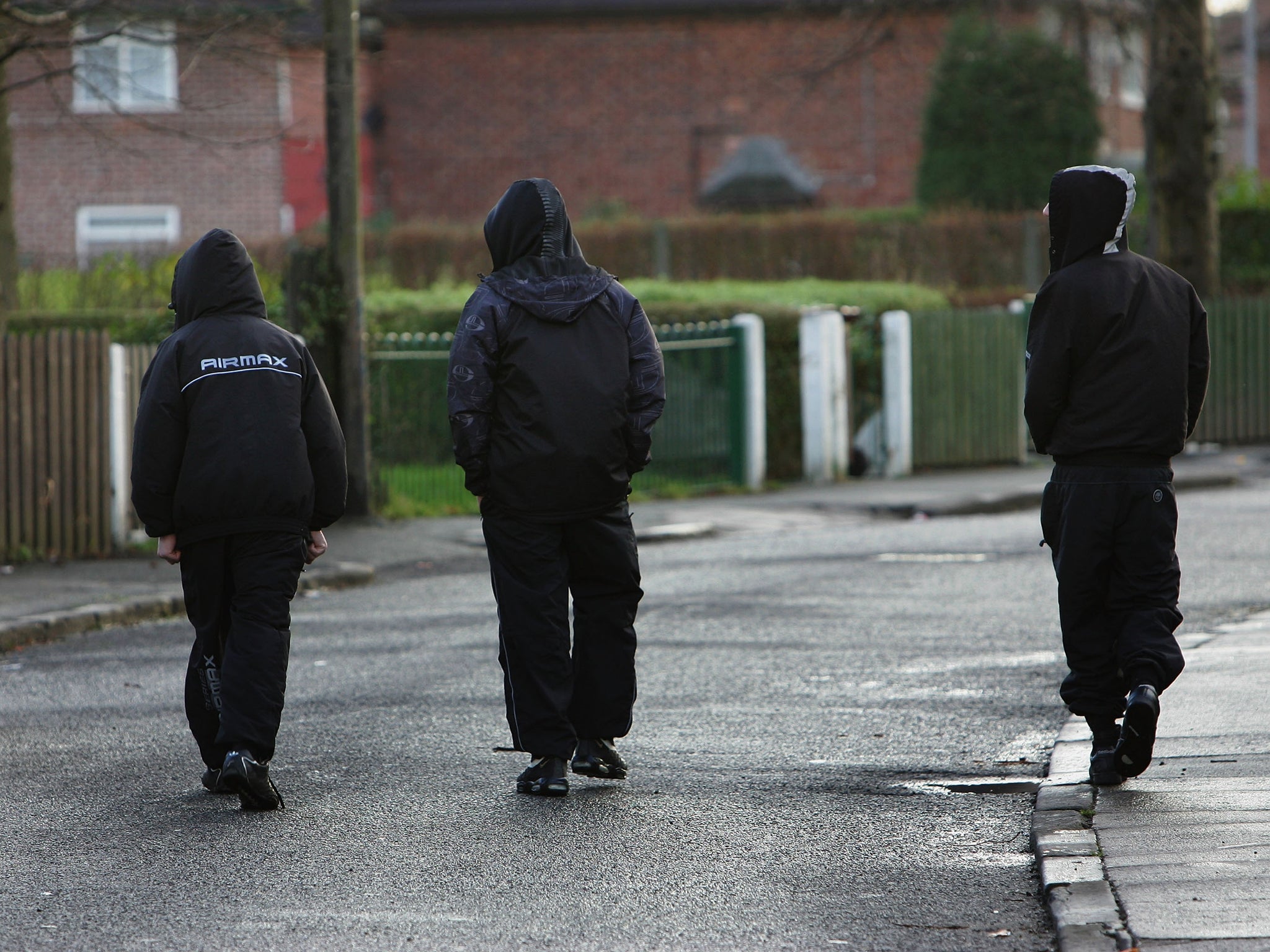Children as young as seven are being lured into street gangs, MPs warn
The government also has no idea how many gangs are operating in Britain

Your support helps us to tell the story
From reproductive rights to climate change to Big Tech, The Independent is on the ground when the story is developing. Whether it's investigating the financials of Elon Musk's pro-Trump PAC or producing our latest documentary, 'The A Word', which shines a light on the American women fighting for reproductive rights, we know how important it is to parse out the facts from the messaging.
At such a critical moment in US history, we need reporters on the ground. Your donation allows us to keep sending journalists to speak to both sides of the story.
The Independent is trusted by Americans across the entire political spectrum. And unlike many other quality news outlets, we choose not to lock Americans out of our reporting and analysis with paywalls. We believe quality journalism should be available to everyone, paid for by those who can afford it.
Your support makes all the difference.Children as young as seven are at risk of becoming embroiled in gang culture, but the Government has no idea how many gangs are operating in the country, a report from MPs has said.
The Home Affairs Select Committee also revealed that although £10m has been spent on tackling gangs the Government has not reviewed the success of the projects that received the money.
In 2013, the Metropolitan Police reported 259 violent youth gangs and 4,800 gang members operating across 19 London boroughs. The following year almost 20 young people were either stabbed or shot every week in the city.
And in 2012, Greater Manchester Police identified 66 gangs with an estimated total of 886 members. However, there is no national database of gangs and their members, or even an agreed definition of what a gang is.
“There is no comprehensive national figure of the number of gangs, or the number of young people involved or associated with gangs,” the report concluded.
“It is vital that a unified gang definition is used across the Home Office and police forces to ensure greater understanding of the scale of this issue both locally and nationally.”
Among children and young people in gangs, 2,409 are known to be subject to sexual exploitation, with 16,500 others at risk. Girls, in particular, can find it hard to leave a gang without violent reprisal.
After riots spread across British cities in the summer of 2011, the Government set up a review of gang violence and brought in a strategy to stop young people being drawn into gangs and to help gang members leave.
But the committee said the Home Office had “failed to effectively evaluate the project”. Keith Vaz, who chairs the committee, said it was “lamentable that such limited progress has been made”.
The report also raised questions over policing. Although most gang violence is reported in London, just 14 injunctions have been brought against gang members in the capital. The report urges the Home Office to publish a league table of injunctions every six months to encourage their use. It also calls for every chief constable to appoint a dedicated officer to lead efforts to tackle gangs.
A similar approach is recommended in schools. “We should accept that children as young as seven are at risk of gang involvement,” the report concluded.
“In every school where there is local knowledge of gangs, a senior teacher should be nominated to ensure mentoring to assist young people at risk of gang involvement.”